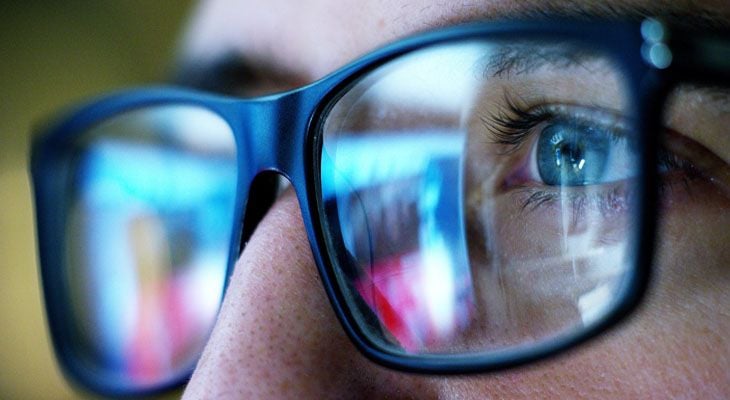
The primary sufferers of technology-related eyestrain used to be adults whose work involved computers. Now, however, people of all ages use computers, smartphones, tablets and gaming devices, which can take their toll on the eyes. As people’s reliance on technology grows, so does the incidence of eyestrain. Keep reading to learn more about digital eyestrain and how you can protect your eyes in the digital age.
How Much Screen Time Is Too Much?
After two hours of screen time, the eyes typically begin to get tired and suffer from digital eyestrain. Additional contributing factors to developing eyestrain include small print, devices held at non-ergonomic angles too far from eyes and the blue light emitted from digital screens. People who wear glasses or contacts are even likelier to strain their eyes, as their prescriptions might not be ideal for mid-range viewing of electronics.
Screens and Blinking
When going about their day, the average person blinks approximately 18 times per minute. However, staring at a screen slows the blink rate. This can lead to itchy, dry and burning eyes. Office workers with computer-related jobs may even undergo physiological changes to their eyes that are similar to those experienced by people who suffer from dry eye disorder.
Age-Related Trends
People of different ages tend to use technology differently. The Vision Council, which represents optical industry suppliers and manufacturers, analyzed these differences in its 2015 report on digital eyestrain.  The council determined that Millennials (individuals born between 1981 and 1996) and members of Generation X (individuals born between 1965 and 1980) are the most likely to strain their eyes due to screen overuse. Sixty percent of Millennials and nearly one-third of Gen Xers spent nine or more hours per day looking at a screen. Only 26 percent of Baby Boomers (individuals born between 1946 and1964) are as glued to digital technology as the aforementioned generations. About 63 percent of Gen Xers and 68 percent of Millennials reported symptoms of digital eyestrain.
The council determined that Millennials (individuals born between 1981 and 1996) and members of Generation X (individuals born between 1965 and 1980) are the most likely to strain their eyes due to screen overuse. Sixty percent of Millennials and nearly one-third of Gen Xers spent nine or more hours per day looking at a screen. Only 26 percent of Baby Boomers (individuals born between 1946 and1964) are as glued to digital technology as the aforementioned generations. About 63 percent of Gen Xers and 68 percent of Millennials reported symptoms of digital eyestrain.
Protect Your Eyes
Despite the rise of digital eyestrain, most people are not about to give up their smartphones and tablets. So how do you protect yourself? Here are a few ways:
- Tweak your lighting. Turn down your ambient lighting when looking at screens, and avoid fluorescent tube lighting. Windows should be to the side of your computer, rather than directly in front or behind it.
- Pick the right display. Liquid crystal displays (LCDs) with flat panels are better than cathode ray tube (CRT) monitors. If you are still using a flickering CRT display, it is time to upgrade. Go for a larger screen with high resolution.
- Adjust your computer’s display settings. Brightness should be about the same as that of your surrounding area. Use the “view” menu to zoom in and make text bigger without changing the font size. Reduce the color temperature to reduce blue light. Microsoft Windows users will find display settings in the control panel. Apple users should look in systems preferences.
- Take breaks. Blink. Look off into the distance. Better yet, get up and walk around.
- Get regular eye exams. Your eye doctor is your ally in avoiding digital eyestrain. Discuss your computer use, how far you sit from the screen and what other devices, such as tablets and smartphones, you typically use.
Call us today. We’ll set up your next comprehensive eye exam to help determine ways you can protect your eyes against digital eyestrain and other factors that may affect your eye health.

